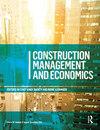搭建桥梁:外来建筑工人双语工作
IF 3.3
Q2 BUSINESS
引用次数: 1
摘要
摘要建筑业雇佣了大量农民工,使建筑工地成为多语言空间。不使用共同语言的工人一起工作,这给安全、整合和生产力带来了问题。克服这些语言障碍的方法包括使用双语工作者作为非正式口译员。非正式口译员的普遍性和重要性在文献中得到了承认。然而,他们的语言工作并没有得到很好的理解,因此,研究的问题是:非正式口译员做什么语言工作,如何做?本研究使用跨语言的理论视角来概念化不同命名语言使用者之间的现场交流,强调语言在使用中的灵活性和多模式性。采用人种学方法,包括40次国际非正式访谈、来自英国的实地观察笔记和材料数据。通过这些数据和理论视角探索非正式口译员的语言工作;确定了他们的语言任务和语言工作的性质,包括视觉、手势和技术的使用。研究结果远不是直截了当和可预测的,而是表明他们的语言工作范围差异很大。在这部非正式的语言作品中,语言之间的界限以及解释的构成是模糊的。语言工作的一个新颖方面出现在数据中,表明这通常包括中介。这项研究阐明了对多语言建筑工地上的沟通和非正式口译的理解,这些发现可能有助于未来使用双语工人作为非正式口译员的最佳实践。本文章由计算机程序翻译,如有差异,请以英文原文为准。
Building bridges: the bilingual language work of migrant construction workers
Abstract The construction industry (CI) employs significant numbers of migrant workers, making construction sites multilingual spaces. Workers who do not share a common language work alongside each other, posing issues for safety, integration and productivity. Methods used to overcome these language barriers include the use of bilingual workers as informal interpreters. The prevalence and importance of informal interpreters is recognized in the literature. However, their language work is not well understood, and hence, the research question addressed is: what language work do the informal interpreters do and how? This study uses the theoretical lens of translanguaging to conceptualize communication onsite between speakers of different named languages, emphasizing the flexible and multimodal nature of language in use. An ethnographic approach is adopted, comprising 40 international informal interviews, and observational field notes and material data from the UK. The language work of the informal interpreters is explored through this data and theoretical lens; their language tasks and the nature of their language work is identified, including the use of visuals, gesture, and technology. Far from being straightforward and predictable, the findings show that the scope of their language work varies considerably. In this informal language work, the boundaries between languages and of what constitutes interpretation are blurred. A novel aspect of language work emerges from the data, showing that this often includes mediation. This study clarifies understandings of communication and informal interpretation on multilingual construction sites and these findings could contribute to future best practice on the use of bilingual workers as informal interpreters.
求助全文
通过发布文献求助,成功后即可免费获取论文全文。
去求助
来源期刊

Construction Management and Economics
BUSINESS-
CiteScore
7.50
自引率
14.70%
发文量
58
期刊介绍:
Construction Management and Economics publishes high-quality original research concerning the management and economics of activity in the construction industry. Our concern is the production of the built environment. We seek to extend the concept of construction beyond on-site production to include a wide range of value-adding activities and involving coalitions of multiple actors, including clients and users, that evolve over time. We embrace the entire range of construction services provided by the architecture/engineering/construction sector, including design, procurement and through-life management. We welcome papers that demonstrate how the range of diverse academic and professional disciplines enable robust and novel theoretical, methodological and/or empirical insights into the world of construction. Ultimately, our aim is to inform and advance academic debates in the various disciplines that converge on the construction sector as a topic of research. While we expect papers to have strong theoretical positioning, we also seek contributions that offer critical, reflexive accounts on practice. Construction Management & Economics now publishes the following article types: -Research Papers -Notes - offering a comment on a previously published paper or report a new idea, empirical finding or approach. -Book Reviews -Letters - terse, scholarly comments on any aspect of interest to our readership. Commentaries -Obituaries - welcome in relation to significant figures in our field.
 求助内容:
求助内容: 应助结果提醒方式:
应助结果提醒方式:


